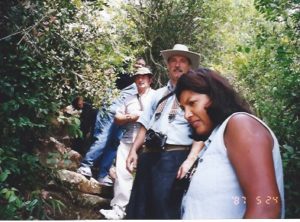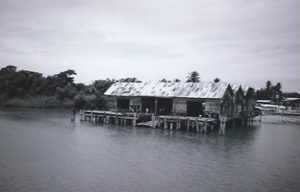Back in 1998, we decided to go on a trip to Guyana, a country on the South American continent, situated between Venezuela and Brazil, to visit relatives living there.
Here are pointers about that country:
The first people to reach Guyana made their way from Asia, perhaps as far back as 35,000 years ago. These first inhabitants were [nomads] who migrated south into Central and South America. Although great civilizations later arose in the Americas, the structure of Amerindian society in the Guianas remained simple. At the time of Christopher Columbus’s voyages, Guyana’s inhabitants were divided into two groups, the Arawak along the coast and the Carib in the interior. One of the legacies of the indigenous peoples was the word Guiana, often used to describe the region encompassing modern Guyana as well as (VIDEO) Suriname (former Dutch Guiana) and French Guyana. The word, which means “land of waters”, is proper considering the area’s multitude of rivers and streams.
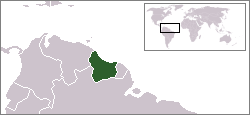
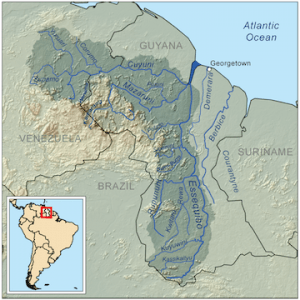
The Dutch
were the first Europeans to settle in modern-day Guyana. In 1621 the government of the Netherlands gave the newly formed Dutch West India Company complete control over the trading post on Essequibo. This Dutch commercial concern administered the colony, known as Essequibo, for more than 170 years. The company established a second colony, on the (VIDEO)Berbice River southeast of Essequibo, in 1627. Although under the general jurisdiction of this private group, the settlement, named Berbice, was governed separately. Demerara, situated between Essequibo and Berbice, was settled in 1741 and emerged in 1773 as a separate colony under the direct control of the Dutch West India Company.
Transition to British rule
Eager to attract more settlers, in 1746 the Dutch authorities opened the area near the Demerara River to British immigrants. British plantation owners in the Lesser Antilles had been plagued by poor soil and erosion and were lured to the Dutch colonies by richer soils and the promise of land ownership. The influx of British citizens was so great that by 1760 the English constituted a majority of the European population of Demerara.[citation needed] By 1786 the internal affairs of this Dutch colony were effectively under British control although two-thirds of the plantation owners were still Dutch.
Both Berbice and the United Colony of Demerara and Essequibo were under British control from 1796 to 1802. By the Treaty of Amiens, both were returned to Dutch control. Peace was short-lived, but the War between Britain and France resumed in less than a year, and in 1803 the United Colony and Berbice were seized once more by British troops. At the London Convention of 1814, both colonies were formally ceded to Britain. In 1831, Berbice and the United Colony of Demerara and Essequibo were unified as British Guiana. The colony would stay under British control until independence in 1966.
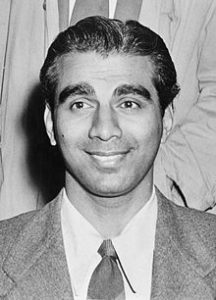
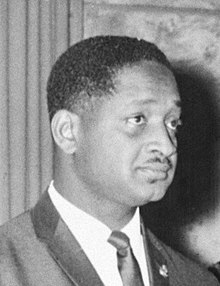
Cheddi Jagan – President 1992 -1997. Forbes Burnham – President 1980 -1985. The two dominant political personalities during the 40s
My wife’s parents were both born in Guyana, emigrated to England in 1953, and lived there until 1970 before moving to the Bahamas. In 1976 they settled in Miami, Florida with their four daughters.
In September 1998
we decided to go and visit Guyana. We left from Miami International to fly to Trinidad, at the Airport in Miami there were lines of people standing in a queue, and everyone seemed to carry like five suitcases, boxes with appliances. We told the desk clerk in Miami we wanted the luggage to go straight to Guyana, however after arriving for a stopover and change of planes in Trinidad we were told that the luggage was also sitting in Trinidad, instead of going straight to Guyana, and that we had to claim it to be put on the plane to Guyana with us, In the meantime, it was time to board the plane, a Flight attendant asked my brother-in-law to go with her to find the luggage, told the rest of us to get on the plane in the meantime. My brother-in-law’s wife had his passport here. As we made our way to the tarmac to board the plane we realized that my brother-in-law was still nowhere to be seen, his wife frantically looking for him running up and down the terminal. knowing that he couldn’t leave the terminal without his passport. In the meantime we are holding the plane from leaving, telling the flight crew that they can’t leave, they assured us that they would wait for a few more minutes. As we entered the plane cabin we saw my brother-in-law sitting in his seat enjoying a cold beer!! How he was able to get on the plane without his passport remains a mystery!
Our adventure.
at this point, it had become tiring and exhausting and we hadn’t even reached our destination. However, a strong cocktail on the plane always does the job!
After arriving in Guyana at the (VIDEO)Cheddi Jagan Airport we had to claim our luggage, and to find out that my wife’s suitcase was missing! It never made the plane in Trinidad! We were told that it would be brought to our address later in the afternoon, but of course, it never arrived.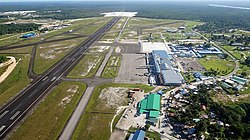
Instead of going straight to Essequibo, we drove to Vreed en Hoop, to get the ferry that takes us to (VIDEO)Georgetown on the Demerara River, about 30 minutes, where we stayed overnight because of the missing suitcase.
After arriving in Georgetown,
we were picked up by a family member who brought us to a home of relatives; we were planning on continuing our journey to Essequibo the same day, but since the suitcase never showed up, we had to stay overnight in Georgetown and wait until the following morning. Morning arrived and still no suitcase, finally, a family member decided to go to the airport to get it.
The following day we had to board another ferry to get across the (VIDEO) Essequibo River to reach Essequibo. That ferry trip was 4 hours long up the river. The ferry looked like a large flat barge, with 2 rows of benches facing each other in the middle of the barge.
As I was sitting on the ferry watching passengers boarding, the crew of the ferry was trying to load a truck onto the ferry by placing two wooden boards between the edge of the loading dock and the ferry, there was no proper, solid loading dock installation, passengers had to walk over a rolling ramp, that was pushed back onto the barge.
To load the truck they had to use boards under each side of the wheels of the truck when the truck started to back onto the boards I was ready to watch this truck crashing into the river as the boards didn’t seem to be able to withstand the weight of the truck, but after an hour of re-aligning and re-enforcing the boards, the truck finally made it onto the barge.
In the meantime
the ferry started to get crowded, they just kept coming on board! Hundreds of them must have been around evening time, rush hour, and this was the only way to get to Georgetown, on the mainland, coming from the other side where the airport was located. We started to get very concerned about our safety on this ferry, when are they going to stop people from boarding???
Amongst them came a row of men dressed in dark blue overalls, walking close to each other over the ramp boarding the ferry, I first thought they were soldiers, but after closer inspection, I realized they were buckled together on their feet and handcuffed to each other! They boarded 10 criminals onto a public ferry, with 3 armed guards! They sat across from us on the benches, staring at us, especially at the women, during the entire 4 1/2-hour trip!
I decided to check out the ferry from one end to the other, as everyone started to get hungry, the only choice was some fried foods, prepared by a guy sitting in a small room frying something in a cast-iron casserole over a propane gas flame, I have no idea what he was frying, but we decided not to indulge in whatever it was.
After a long drive along the Essequibo River, we arrived in Essequibo, our final destination.
Here are some of my favorite memories
On another day he organized a trip to the Pomeroon River on a motorboat with a friend of his, he was our guide and operator of the boat. The tour was along the edges of the river, the first stopover on the way was to visit a native Amerindian family, living on the edge of the river, making a living selling fresh coconut water and some fried snacks. The second stop was about a mile upstream, on the edge of the jungle, we approached a dilapidated wooden dock. After walking a few hundred yards into the bush, we saw this old, wooden house, it looked like something out of a fiction movie or a scene from Harry Potter!, this is where his mom was living, all by herself. He asked us to come in and say hi to her. We entered into this dark, somber room, the bed in the middle covered with mosquito net all around, and there was this old lady laying in bed.
![]()
As we made our way back to board the boat my son Alex asked the boat owner “ how come we don’t have to wear any life jackets!” because the river was really wide, dark, deep, and choppy, his answer, with a grin on his face, was “you don’t need life jackets (VIDEO) if you fall in the Puranas get you!”
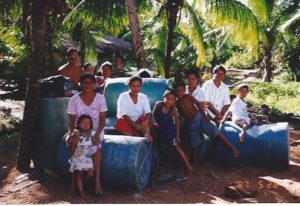
Pictures above: visiting an Amerindian family on the edges of the Pomeroon River
On another occasion we decided to take a plane ride to Kaieteur Falls, four times higher than Niagara Falls, this single drop waterfall is a dramatic facet of the Potaro River – a wine, coffee, or coca-cola-colored flow that runs for 140 miles.
Over the years
I flew quite a bit, having lived and worked in Europe, Bermuda, Bahamas, Canada, the Caribbean, and Mexico, but this one flight I will never forget! The plane was an older Cessna that seated about 8 people. As I sat in the plane before takeoff, looking out of the window, which was over the right-hand wing of the plane, I saw what looked like Grey masking tape covering holes in two or three spots! What other purposes besides holding or covering something could tape possibly serve on the wings of a plane, I was asking myself!?
We are about to fly over Dschungle, flying over the tallest waterfall in the world, with absolutely no possibility of emergency land anywhere, with a plane that has scotch tape on its wings.
Needless to say. I didn’t enjoy that flight at all, the way the pilot was flying this “thing”, straight towards the falls, turning abruptly in front of it for us to see the falls from close up.
After that treacherous flight, we landed on top of the plateau, on the edge of the Fall, an area that was cleared of Dschungle, to make space for a landing strip with a shop, restaurant, and restrooms.
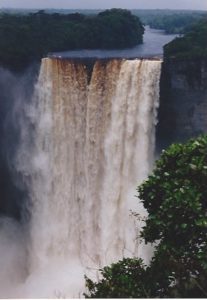
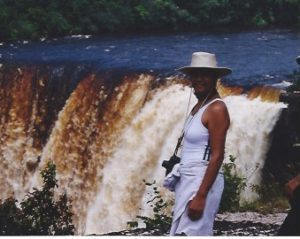
Pictures above. Standing on the edge of the Kaieteur Falls in Guyana
Looking for a Website Builder? Click right here to see the best there is!
